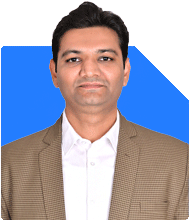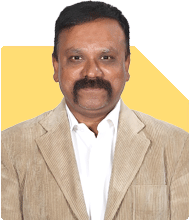I m 53. My SIP is 3k monthly. No other personal investments. I run my own successful tuition centre. My wife is working. Family SIP IS 10K monthly. Avarage family expenses are over 1.5 lac monthly. Suggest me a personal corpus to lead comfortable retirement life.
Ans: You have built a strong career with your tuition centre. At 53, you are still active and productive. Your wife is also working, which adds stability. This is a great position. Many people at this age worry about job security. You are your own boss. That itself is a huge blessing. Now, the next important step is preparing for retirement. You want to know the right corpus to lead a comfortable retired life. Let me share a detailed 360-degree plan.
» current financial picture
– Your personal SIP is Rs 3,000 monthly.
– Family SIP is Rs 10,000 monthly.
– Together, investment is Rs 13,000 monthly.
– Current family expenses are around Rs 1.5 lakh monthly.
– No other personal investments are mentioned.
This gap between expenses and savings is large. At present, investment is too small compared to expenses. But you have strong earning capacity. That can be converted into savings with right planning.
» importance of retirement corpus
Retirement is not about stopping work. It is about having financial freedom. Retirement corpus is the fund that gives monthly income in future. Without it, dependence will rise. With it, you can live with dignity and choice. You need a large enough fund to cover 25 to 30 years of post-retirement life.
Expenses today are Rs 1.5 lakh monthly. They will grow due to inflation. After retirement, medical costs also rise. So your corpus must be strong enough to meet all these.
» why current savings are insufficient
Rs 13,000 monthly SIP is too low for this stage. At 53, retirement is close. You may have 5 to 7 active earning years left. That means you have limited time to build wealth. The current contribution is not enough to create required corpus. The good part is, you are still earning high income. If you increase investments sharply now, you can make up.
» action step: increase savings rate
You must increase personal SIP from Rs 3,000 to at least Rs 30,000. Family SIP also should rise from Rs 10,000 to at least Rs 40,000. Together, you must save Rs 70,000 to Rs 80,000 monthly. With this, corpus creation will accelerate.
If you continue only with Rs 13,000, the corpus will not be enough. This will create financial stress in retirement. So scaling up savings is non-negotiable.
» emergency fund and safety
Before raising SIP, keep emergency fund ready. For your family, 6 months expenses is needed. That means around Rs 9 lakh to Rs 10 lakh. This must be kept safe in FD and liquid mutual funds. This will handle sudden shocks. Only after this buffer, invest for long term.
» asset allocation for retirement
At 53, your risk appetite is moderate. Retirement horizon is short. You cannot take very high equity exposure. But you also cannot stay with only debt. Because inflation will eat away returns.
Balanced allocation is wise:
– Around 50% in equity mutual funds.
– Around 40% in debt mutual funds.
– Around 10% in gold funds.
Equity gives growth, debt gives stability, gold gives hedge. This mix will help beat inflation and still reduce volatility.
» role of actively managed funds
Many investors think index funds are enough. But index funds have clear limits. They simply copy the market. They cannot beat it. They also fall fully in crashes. Actively managed funds, run by skilled managers, can give better protection. They can rotate sectors, choose strong companies, and avoid weak ones. For retirement planning, safety and growth are both important. Hence actively managed funds are better than index funds.
» why avoid direct funds
Direct plans look cheaper. But they leave you alone in critical decisions. Without guidance, mistakes are common. For retirement planning, mistakes can cost lakhs. Regular funds through a Certified Financial Planner give better tracking. They help with rebalancing, monitoring, and tax planning. The slightly higher cost is worth the long-term value.
» insurance and protection
Retirement planning is not only about investments. Protection is equally vital. At 53, you must review health cover. Medical expenses are the biggest threat in old age. Buy a good personal health insurance, even if employer or spouse’s employer covers you. Also review life insurance. If children are financially independent, high cover is not required. But if liabilities remain, term cover should continue till they are cleared.
» reducing lifestyle inflation
Your expenses are Rs 1.5 lakh monthly. This is high. It is fine if income supports. But you must watch lifestyle inflation. Each year, expenses must not grow faster than income. Try to cut unnecessary costs. This creates space to increase investments. Remember, each rupee saved today adds security tomorrow.
» retirement income strategy
Corpus alone is not enough. You must design income flow from corpus. The corpus should give stable monthly income without losing growth. This can be managed by:
– Keeping part of corpus in short-term debt for regular withdrawals.
– Keeping part in equity funds to grow and refill.
– Periodically rebalancing between them.
This way, income flows smoothly while corpus continues to grow.
» taxation considerations
For equity mutual funds:
– Gains after 1 year are taxed as long-term.
– Gains above Rs 1.25 lakh are taxed at 12.5%.
– Short-term gains are taxed at 20%.
For debt mutual funds:
– Both short-term and long-term are taxed as per your income slab.
This means equity funds are more tax-efficient for long-term. But since retirement needs stability, debt funds are also necessary. A Certified Financial Planner can guide on withdrawal strategy to minimize tax.
» target corpus estimate
With Rs 1.5 lakh monthly expense today, inflation will double it in future. Retirement could last 25 years or more. So a large corpus is needed. The ideal range can be between Rs 4 crore to Rs 5 crore. This may look high now, but with inflation it is justified. That size corpus will support lifestyle, healthcare, and peace of mind.
» roadmap to reach corpus
– Immediately raise personal SIP from Rs 3,000 to at least Rs 30,000.
– Raise family SIP to Rs 40,000 or more.
– Build emergency fund of Rs 10 lakh in FD + liquid funds.
– Allocate new SIPs into 50% equity, 40% debt, 10% gold.
– Review portfolio once a year.
– Rebalance allocation every 2 years.
This roadmap can move you closer to retirement comfort. Even if you cannot reach exact corpus, you will reach near. That itself reduces stress.
» role of spouse income
Your wife is working. That adds strength. Her income also can support savings. If both of you together increase contributions, retirement planning will be smoother. Discuss and align both goals. Retirement is a family journey, not just personal.
» retirement lifestyle planning
Money alone is not retirement. You must also plan lifestyle. Decide where to stay, how to spend time, what hobbies to pursue. This helps in estimating future expenses better. It also ensures emotional well-being along with financial well-being.
» mistakes to avoid
– Do not postpone higher savings.
– Do not depend only on FD.
– Do not stop SIPs during market fall.
– Do not put money in insurance policies with low returns.
– Do not ignore health insurance.
Avoiding these will make the path smoother.
» finally
You are already successful in your career. At 53, retirement planning is urgent, but not too late. With strong income, you can save aggressively now. Increase SIPs, balance allocation, and secure health cover. Aim for Rs 4 to 5 crore corpus. This will give you a comfortable and stress-free retirement. With discipline and professional guidance, you will achieve it. Your efforts today will gift you and your wife peace tomorrow.
Best Regards,
K. Ramalingam, MBA, CFP,
Chief Financial Planner,
www.holisticinvestment.in
https://www.youtube.com/@HolisticInvestment






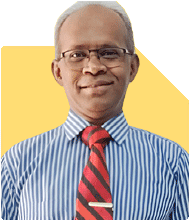



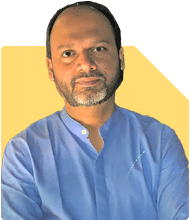

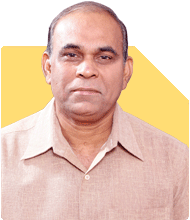


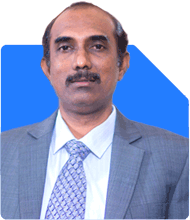
.jpg)


